Sequential webhooks
Overview
Sequential webhooks allow you to configure webhooks to respond to requests in a sequence. This is useful for testing timeouts, retry handling, and other scenarios where you need to simulate a series of responses.
How to Use Sequential Webhooks
1. Creating a Sequential Webhook
To create a sequential webhook, follow these steps:
- Click on the Create Webhook button in the user interface.
- Choose Sequential from the dropdown menu.
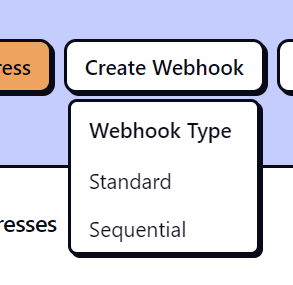
2. Configuring the Webhook Sequence
In the Webhook Builder, you can define the sequence of responses. Each response can have its own status code, delay, content type, and body.
Adding Responses
- Click the + button to add a new response.
- Set the Response Code to the desired HTTP status code.
- Define the Response Delay to simulate network & server latency.
- Select the Content-Type from the dropdown menu.
- Enter the response body in the editor.
Example Configuration
In this example, the webhook is configured to respond with a 500 status code four times, followed by a 200 status code once. The delays and response bodies can be customized as needed.
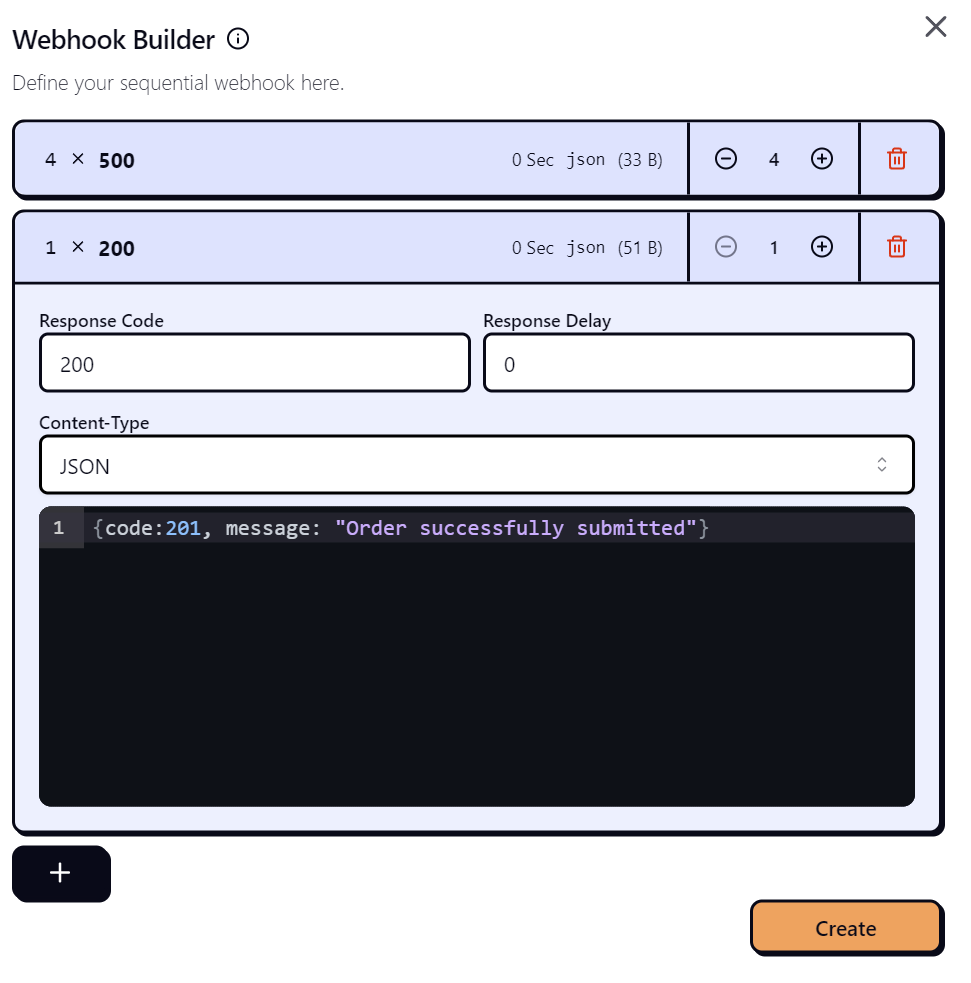
3. Monitoring and Testing Sequential Webhooks
Once configured, the sequential webhook can be used to test various scenarios. The responses will be sent in the order defined in the Webhook Builder.
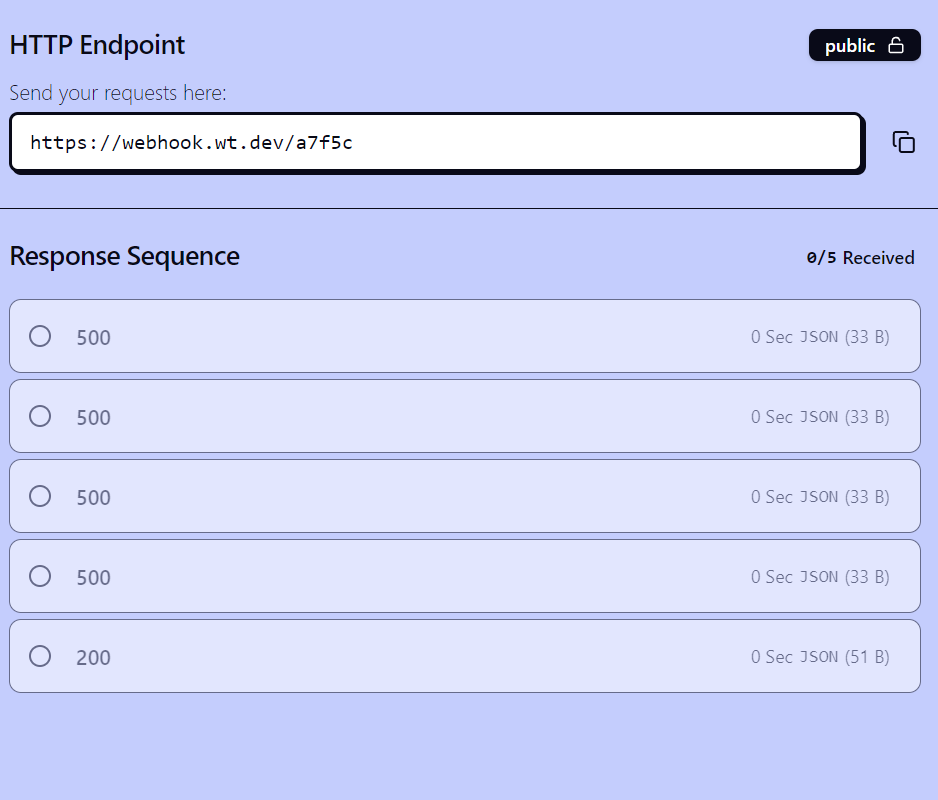
Viewing the Sequence
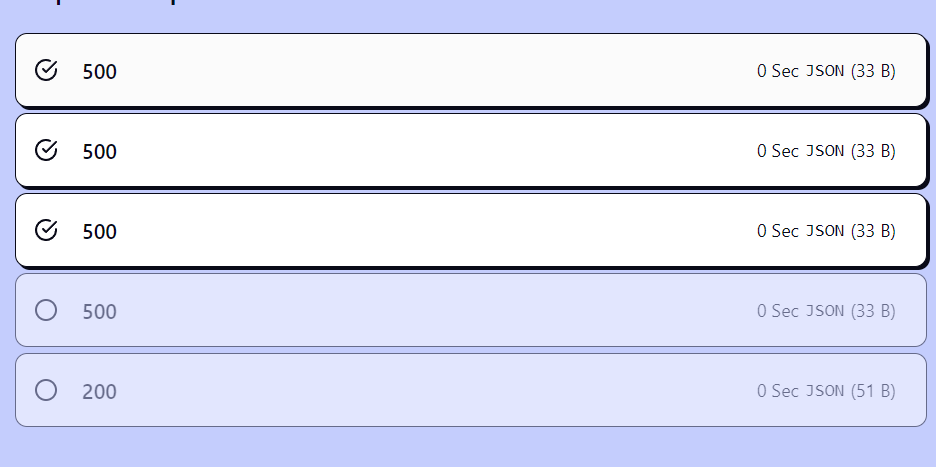 The sequence of responses is displayed, showing the status code, delay, content type, and size of each response.
The sequence of responses is displayed, showing the status code, delay, content type, and size of each response.
4. Examining Requests and Responses
You can monitor the requests and responses to ensure they are behaving as expected. The interface provides detailed information about each request and the corresponding response.
Request Details
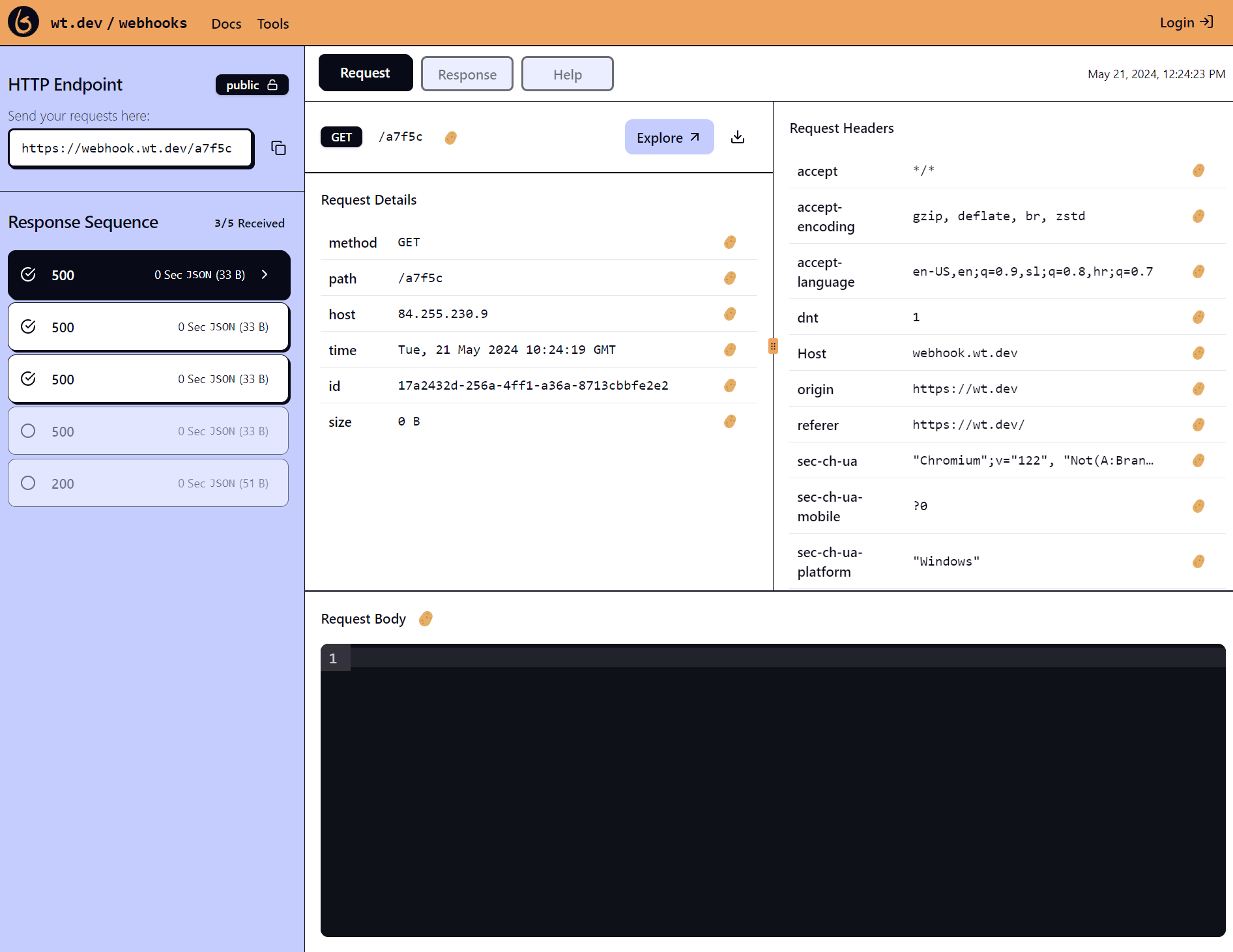
- Method: The HTTP method used for the request.
- Path: The endpoint path.
- Host: The host making the request.
- Time: The timestamp of the request.
- Size: The size of the request body.
Request Headers
Detailed information about the request headers is displayed, including accept, host, origin, user-agent, and more.
Request Body
The request body is shown in a dedicated section, allowing you to inspect the content sent to the webhook.
Practical Applications
Sequential webhooks are particularly useful for:
- Testing Retry Logic: Simulate a series of failures followed by a success to ensure your application handles retries correctly.
- Simulating Timeouts: Configure delays to test how your application handles timeouts and slow responses.
- Complex Workflow Testing: Use sequences to mimic complex workflows that require multiple steps and varied responses.
By leveraging the sequential webhooks feature, you can thoroughly test and validate your application's handling of webhooks in various scenarios, ensuring robustness and reliability.
Feel free to use this template and adjust any section to better fit your needs or the specific functionalities of your service.